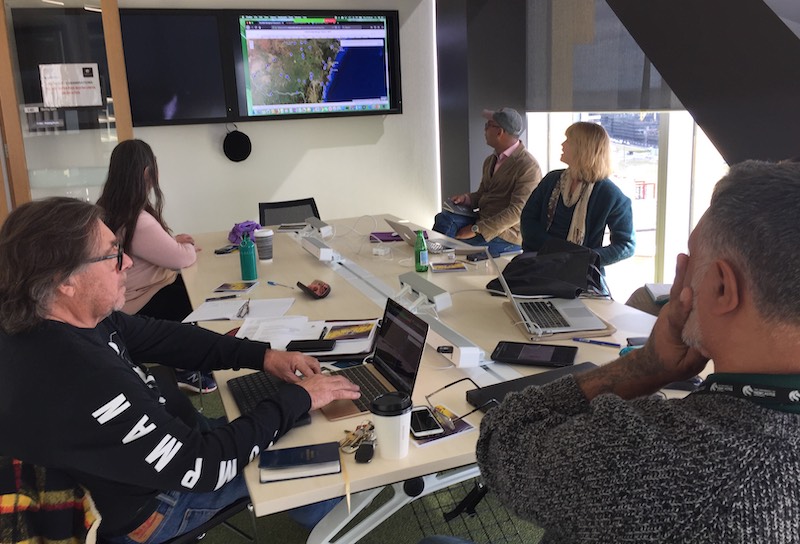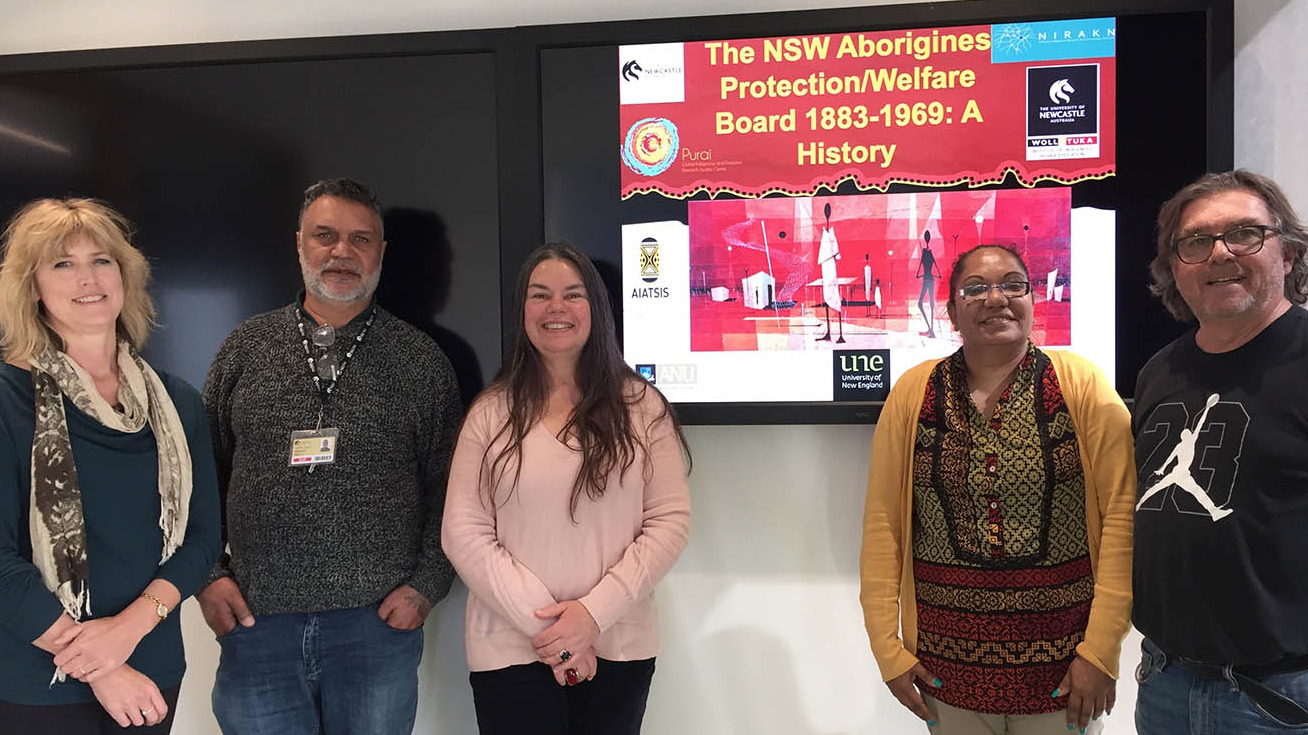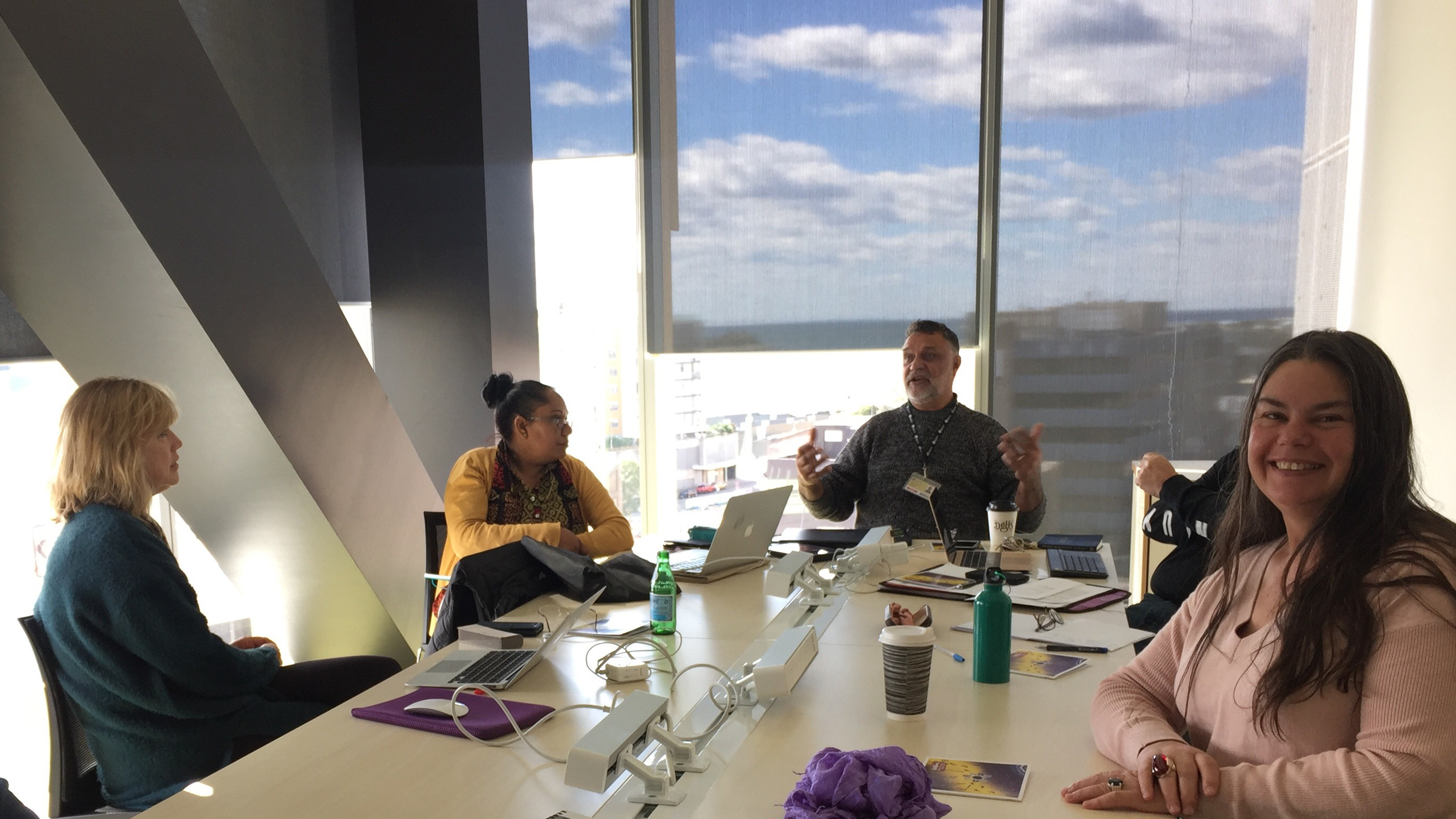Chief investigators meet: history of the Aborigines Protection/Welfare Board (1883-1969) project
A digital map, touring exhibition, inclusion of research material in the Australian National University's Indigenous Studies major and the painstaking copying, by hand, of minutes from archives are just some of the many outcomes produced by researchers involved in the History of the Aborigines Protection/Welfare Board (AP/WB) 1883-1969 project.
According to lead Chief Investigators, Professors Victoria Haskins and John Maynard, engaging Indigenous communities directly in the research process is the future for historical studies involving Australia’s First Nations people.
It will also contribute to reconciling Australia’s history and move the nation forward to a shared and just future," said Professor Maynard.
 As part of the TLMap Project, a digital map, put together by systems architect, Bill Pascoe, shows how, over a period of 86 years, AP/WB reserves, stations and missions were acquired and later revoked, leased or sold off forcing many Aboriginal families to move, often away from traditional homelands.
As part of the TLMap Project, a digital map, put together by systems architect, Bill Pascoe, shows how, over a period of 86 years, AP/WB reserves, stations and missions were acquired and later revoked, leased or sold off forcing many Aboriginal families to move, often away from traditional homelands.
Five Chief Investigators from four universities and an Indigenous PhD student have collaborated with organisations like; the Australian Institute of Aboriginal and Torres Strait Islander Studies (AIATSIS), Department of Aboriginal Affairs (DAA), state and national libraries, collections and museums and regional historical societies in cities, regional towns and communities stretching the length and breadth of the state.

Professor Jakelin Troy plans to hold a meeting at Thredbo with her Ngarigo mountain community interviewing people about the experience of being “off the mish [mission]” later in the year.
Dr Lorina Barker’s creative response to the project has culminated in the publication of Wii Thirra: Campfire Songs with musician, Simon Mellor, a theatre script (Trucked Off) a travelling exhibition (Looking Through Windows) toured to Redfern, Armidale, Brewarrina.
"A giving back or sharing” with her community of research participants is an important aspect of Dr Barker’s work which acknowledges the pain and possible healing that comes with remembering a traumatic past.
PhD scholar, Ashlen Francisco, is on track to submit her thesis mid 2020 about the history of the transition from "protection" to "welfare" in NSW between 1939 to 1940.
One significant outcome of the project was instigated by Dr Lawrence Bamblett who has included his research in an Indigenous Studies major at ANU.
Dr Bamblett says the response from students and impact on them is immediate.
“The students, many who already work in health, legal, government and educational sectors, have indicated that the material has had a significant impact on the ways they view and think about Aboriginal history,” he says.
One of his students wrote, “This course has taught me about a significant part of Indigenous history that I have never learned before. Among other things, I was completely unaware of the political activity that was undertaken by Aboriginal people.”
She added, "I learned that the creativity which is so often expressed through the arts was used to establish some of Australia's most memorable rights protests. Before doing this course, I viewed the Day of Mourning protest as a reminder that European settlement was detrimental to the first Australians, but I had no idea about its long and rich political history."
An indirect spin-off from the Aboriginal Protection/Welfare Board investigations is the incorporation of interviews and unearthed material in the Kinchela Boy’s Home Mobile Education Centre.
The Centre aims to provide a deeper understanding about the power and authority of the AP/WB and how it operated by forcibly removing Aboriginal children, first from their families and sending them to institutions, foster care or placing them in domestic service, on farms and other apprenticeships.
CEO of Kinchela Boys Home Aboriginal Corporation, Tiffany McComsey, said one of the ways to support intergenerational healing is to showcase the stories of survivors and the stories of their own journeys are leading this work.
“The centre’s purpose is not to create guilt but to help advance understanding about the impacts of intergenerational trauma," said Ms McComsey.
Future plans for the project include a week’s trip to Walgett by Dr Ray Kelly and Professor John Maynard to conduct further interviews and research.
During the meeting, it was also resolved to bring the Dr Lorina’s Looking through Windows exhibition to Newcastle’s Art Gallery.
The project will culminate in a two-volume book written by Professor John Maynard and co-authored by Professor Victoria Haskins and include a general history of the Board as well as chapters based on four case studies by the Chief Investigators.
Contact
- Dr Jacqueline Wright
- Phone: 02 4921 7408
- Email: jacqui.wright@newcastle.edu.au
Related news
The University of Newcastle acknowledges the traditional custodians of the lands within our footprint areas: Awabakal, Darkinjung, Biripai, Worimi, Wonnarua, and Eora Nations. We also pay respect to the wisdom of our Elders past and present.